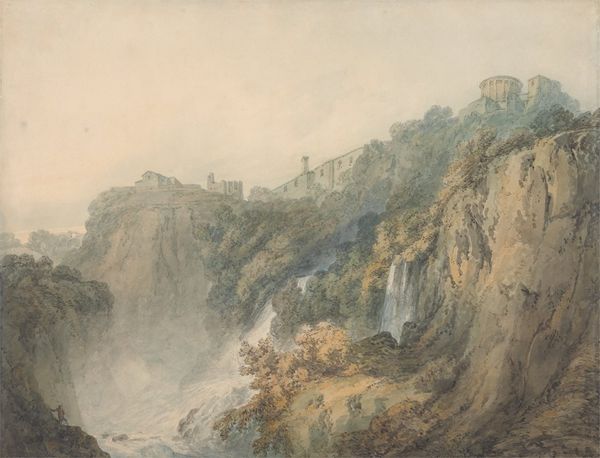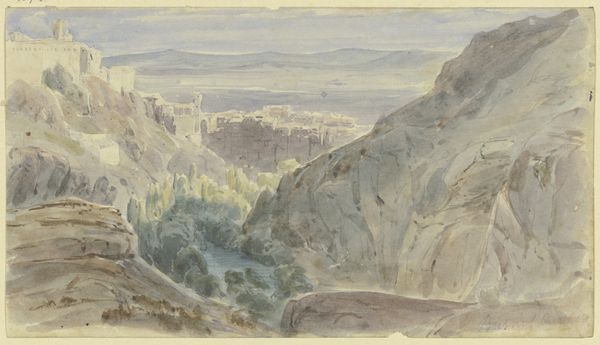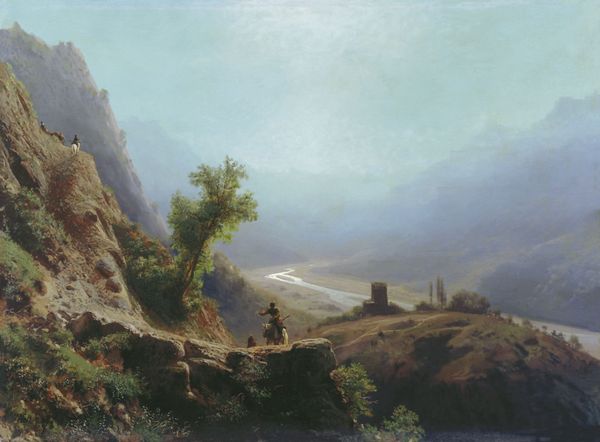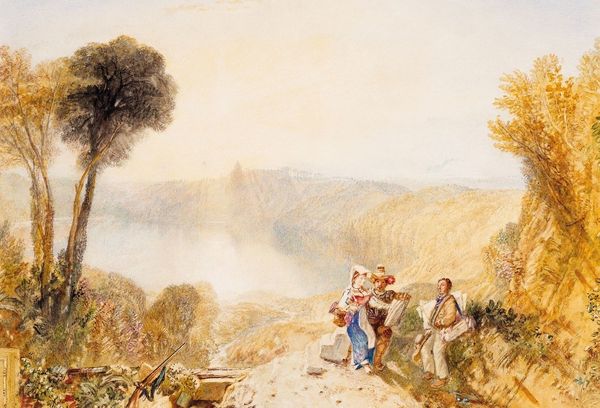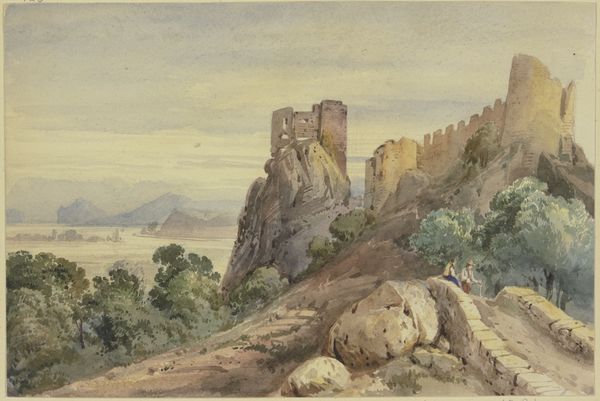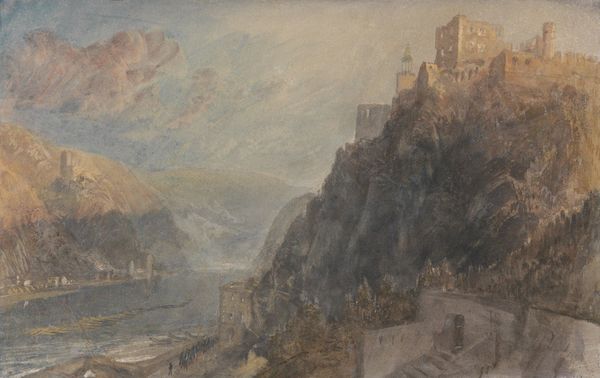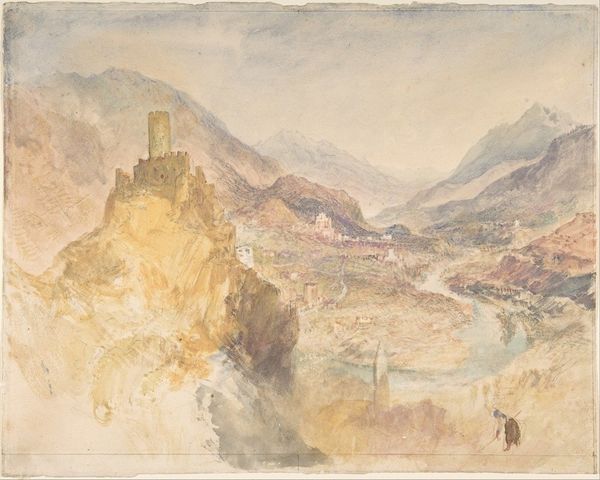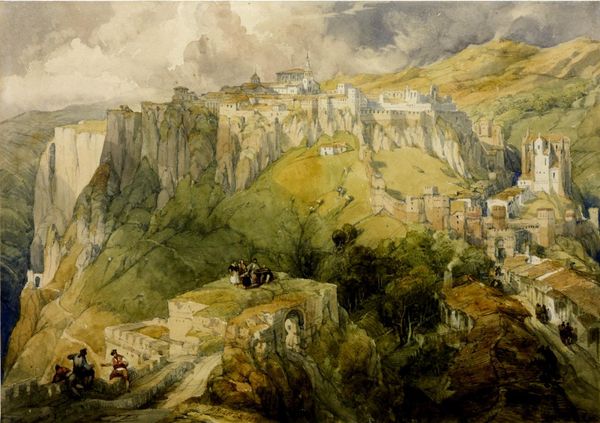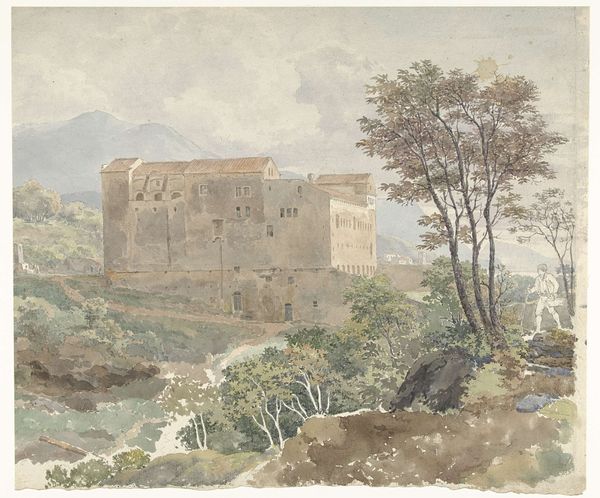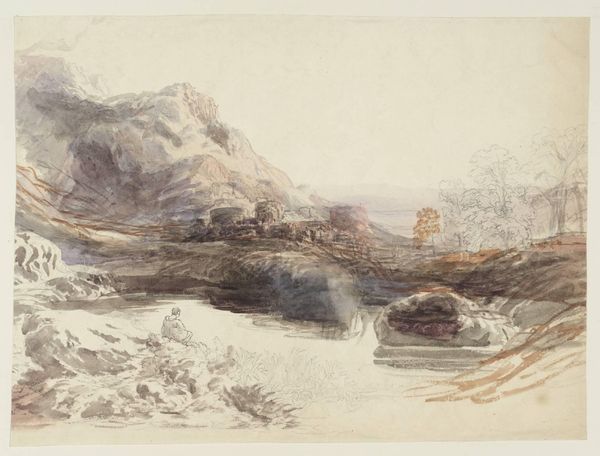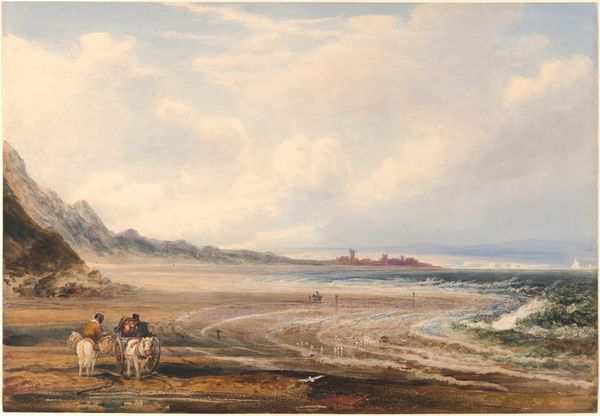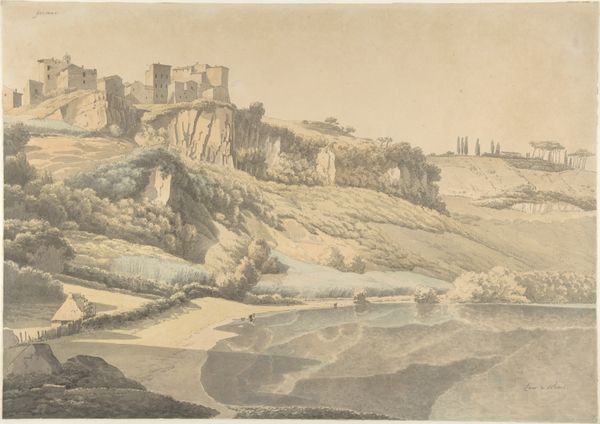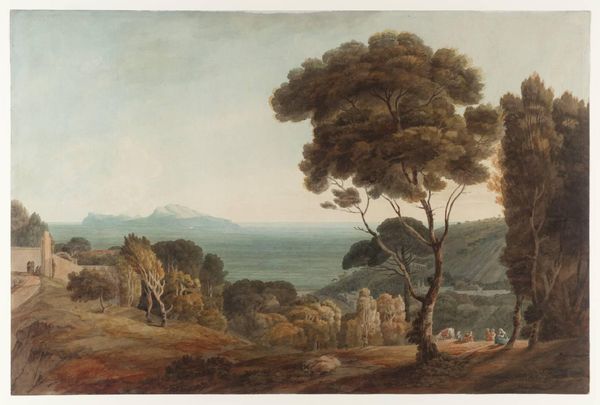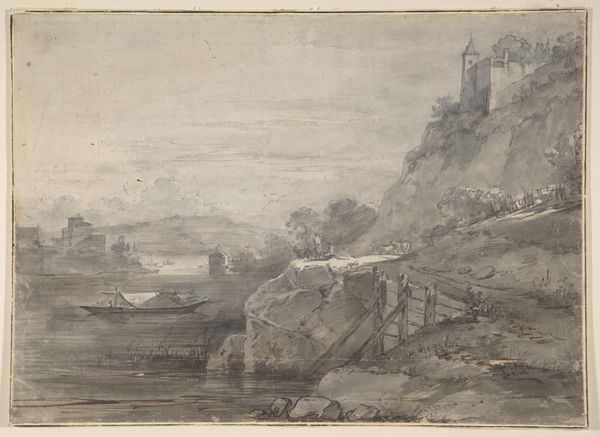
Dimensions: support: 324 x 484 mm
Copyright: CC-BY-NC-ND 4.0 DEED, Photo: Tate
Curator: William James Müller painted "The Temple, Aegina." Look at how the watercolor imbues the scene with a hazy, dreamlike quality. Editor: Yes, the washes are so delicate it feels almost ethereal. I wonder about his choice of watercolor. Was it simply for ease of transport while travelling? Curator: Perhaps. But watercolor also perfectly captures the symbolism of a faded glory. The temple, a beacon of classical ideals, is now a ruin softened by time. Editor: I'm curious about the ground pigments Müller would have had available and how that might have influenced the specific muted palette. The figures seem secondary to the landscape and architecture. Curator: Indeed. They are included, perhaps, as a reminder of the human scale against the backdrop of history, or a vignette of contemporary life playing out among the ruins. Editor: Knowing the materials and the likely labor involved always adds another layer of appreciation for me, but seeing it like this, suspended between document and memory, is equally resonant. Curator: Precisely, it’s a fleeting moment captured with a medium equally susceptible to time. Editor: A nice tension between the permanence of architecture and the ephemerality of watercolour.
